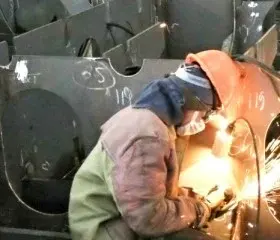/101764646-1600x400.jpg?width=300&name=101764646-1600x400.jpg)
EFFECTIVE COMMUNICATION OF WHS RESPONSIBILITIES
Communication of WHS responsibilities can be done quickly and effectively when your organisation has efficient processes in place.
These processes require that work safety risks have been identified and documented and that responsibility has been allocated to the correct authority within your organisation. There is a range of responsibilities within any company from management’s overall WHS responsibility to the day-to-day responsibility of individual workers.
- Work Health and Safety Obligations
- Formalise Position Descriptions
- Line Management Responsibility
- Performance Indicators and Assessment
- Management Representative
- Workers’ Responsibilities
- Functional Responsibility for WHS
Employers are required by legislation to provide a working environment that is safe and as free as possible from health risks, including psychological as well as physical risks.
This should include:
- regular maintenance of industrial plant and safety
- putting processes in place to reduce health risks in operations the use, handling, storage or transport of plant or substances
- minimising hazards and maintaining safe conditions in the work environment
- providing adequate facilities for worker’s welfare
- providing proper information, training and supervision that teaches workers to perform their work safely and without risk
It’s also important to remember that health and safety obligations don’t stop at workers and contractors; they extend to anyone who might be exposed to WHS risk from onsite operations, such as members of the public, visitors, and volunteers.
To show you’re serious about work safety right from the start, this information should be included in the position description of all employees. Detail the WHS responsibilities relevant to each employee’s specific duties, and make them clear, relevant and easy to understand.
Making WHS a concrete and measurable part of your employees’ work will have a very real impact. Link your managers’ pay and promotion to WHS performance in their area of responsibility. You can also promote awareness throughout your organisation by featuring WHS matters in the personal objectives and annual assessment of all employees. Objectives should be specific, achievable and measurable, including:
- outcome-based objectives (eg, a reduction in the number of manual handling injuries).
- process-based objectives (eg, the number of inspections conducted, hazards rectified, etc).
- demonstrated personal commitment to WHS.
Any manager who represents your company for WHS needs to have the appropriate level of authority and competence required by the legislation. This includes a good knowledge and understanding of:
- how the workplace operates
- the relation of WHS issues and systems in relation to that workplace
- communication, consultation and negotiation skills
- the WHS / OHS Act's and relevant regulations in their jurisdictions
- the health and safety issue resolution process
- the “person conducting a business or undertaking” (PCBU) duties under WHS legislation and the concept of reasonable practicability
- hazard identification and risk assessment processes
- incident investigation and root cause
- the role and functions of health and safety representatives and representatives of registered worker organisations
- the role of WHS authority inspectors, their powers and issue resolution functions
- ability to get access to expert technical information and advice from certified OHS professionals
All workers are responsible for the WHS impact of their own actions. They also have a duty to make sure their work is carried out in line with WHS Management Procedures and any applicable legislation.
More specifically, workers must:
- take reasonable care for their own health and safety
- take reasonable care for the health and safety of others who may be affected by their actions in the workplace
- co-operate if the PCBU needs them to do something to comply with a legislative requirement
- not intentionally or recklessly interfere with or misuse anything provided at the workplace in the interests of health, safety or welfare
- inform their company of any allergies or medical conditions that may impact on their health and safety
Last but not least, all workplaces should have a manager or managers appointed who are specifically concerned with WHS – for example, a WHS manager, WHS advisor, human resources manager, etc. You can allocate WHS responsibility at the site level with a functional responsibility matrix.
Making health and safety a top priority is crucial for any organisation. However, it's not always feasible to dedicate the time and resources necessary to manage it effectively. It can also be challenging if you don't have someone in-house who is qualified to take on this responsibility.
That's where our comprehensive fixed-fee Health & Safety support comes in. We offer on-site audits and award-winning software to help you fulfil your legal obligations confidently, saving time and money while protecting your people and organization.
Our service helps businesses improve workplace safety and protect their employees' well-being. By partnering with us, companies can reduce the risk of accidents and injuries, ensure compliance with OHS/WHS regulations, and increase productivity.
Download Your Free Checklist PDF
Get instant access to our expert-designed checklist to help you. Simply fill out the form below to download your copy.SIMILAR READINGS

1 min read
1 min read
Want to capture tangible business benefits from the culture...

4 min read
4 min read
Seven reasons why strategically managing your health and...
Read More
4 min read
4 min read
Protect yourself and your business – maintain a thorough...

2 min read
2 min read
Keep your workplace safe and productive by identifying and...
Read More